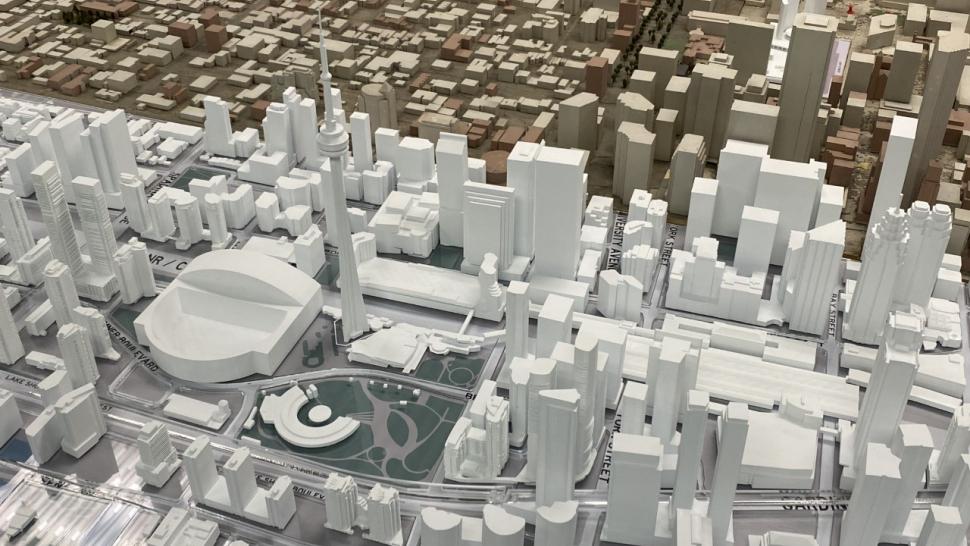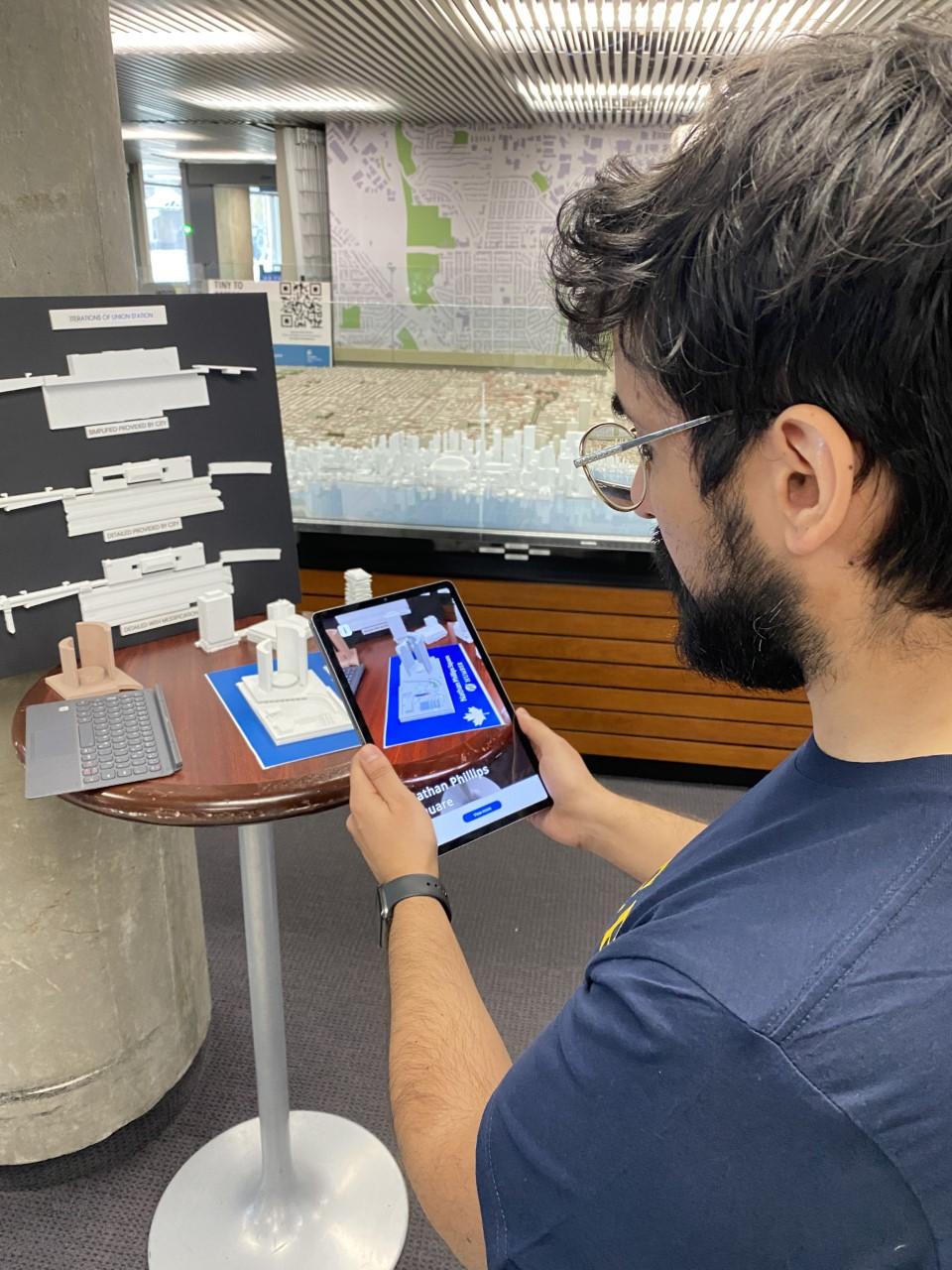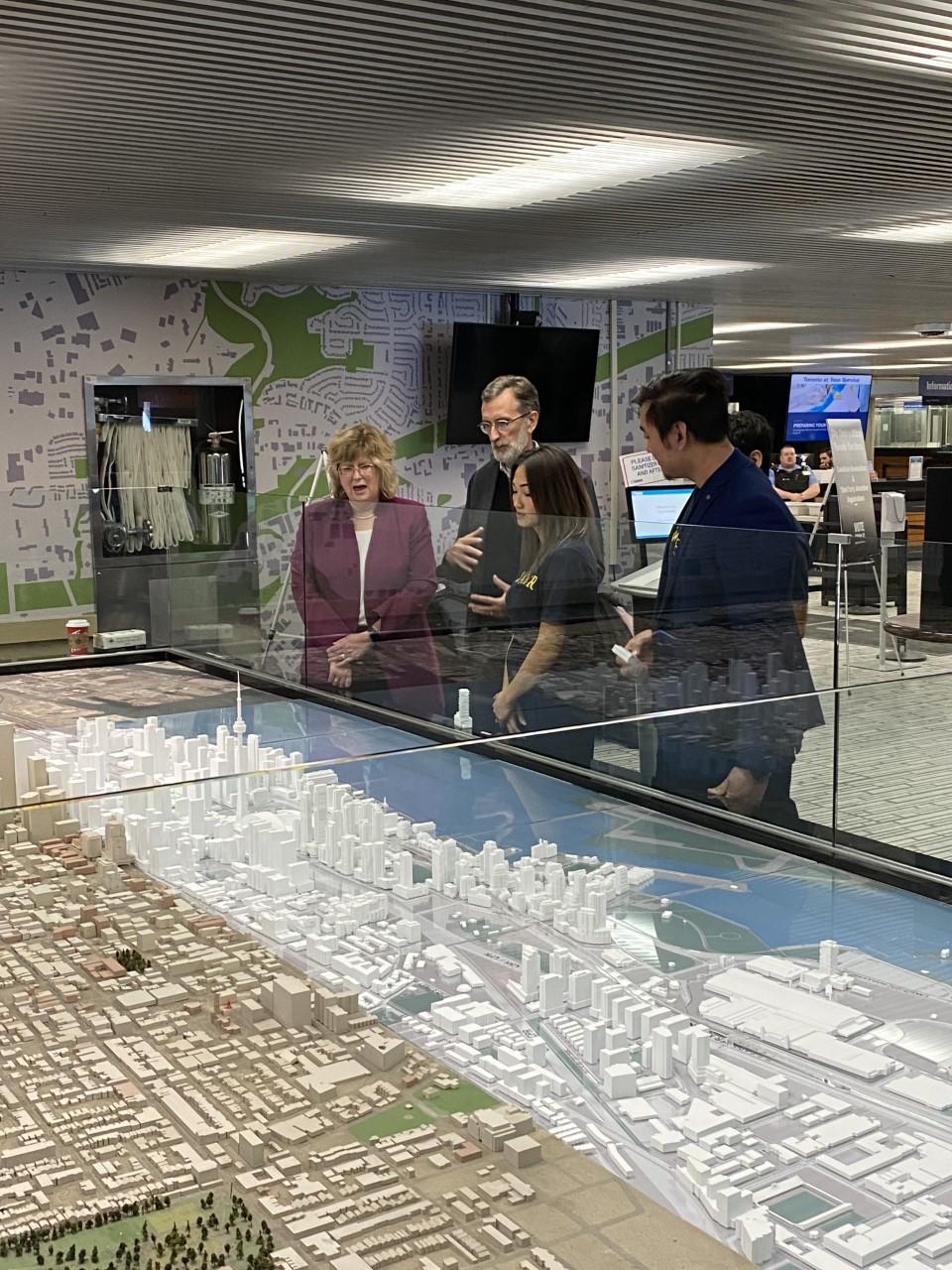
A team of Humber College students are using municipal databases, 3D printing, and augmented reality to update and reimagine the 30-year-old model of Toronto currently on display at City Hall.
The City of Toronto has partnered with Humber College through the college’s Centres of Innovation Network to update TinyTO - a model of Toronto that’s in the lobby of City Hall. Humber students in the Industrial Design, Interior Design, Graphic Design, User Experience Design and Game Programming programs designed and produced updates to the model, which included a 1:1500 scale 3D-printed model of City Hall and the Toronto sign.
There are also plans for additional enhancements to follow including an augmented reality component.
“Tremendous opportunity for Humber students”
The Humber students, who were taking part in the internship that’s offered as one of Humber’s Centre for Creative Business Innovation (CCBI) Fellowships, worked closely with city staff to design and produce three new sections of the model using data provided by the municipality.
“Working on TinyTO has been a tremendous opportunity for Humber students to showcase their innovative ideas through work-integrated learning and earn real-world experience that is supporting development in Toronto,” said Humber President and CEO Dr. Ann Marie Vaughan. “We are looking forward to continuing to build big things at TinyTO with the support of the City of Toronto.”
Game Programming student Ariel Quinteros said he was intrigued when he heard about the project and wanted to be a part of it. He’s creating an app that, once completed, will add an augmented reality aspect to the project. Those with the app can use their smartphone or tablet to pull up photos and additional information on the building they’re scanning.
Quinteros gained a lot of experience from working on the TinyTO Fellowship and would recommend it to other students. He learned to work as part of a team and to be responsive to the needs of the project, developed his coding and planning skills and got an early jump on learning how to use software that will eventually be taught as part of his program.

He said the project also gave him insight into how the city has developed over the years.
“It has been a great experience for me,” said Quinteros.
Humber and the City of Toronto held a brainstorming event on the project in 2020. Last year, students focused on developing concepts and a vision for the future of the model and, this year, produced the new sections and installed them.
Model’s updates are 3D printed
The original version of the model used foam, paper, and wood while the three new segments are 3D-printed buildings that sit on top of acrylic blocks with a vinyl base map underneath to allow each component to be updated, maintained, and replaced when necessary.
The goal is to create a unique real-time, citywide interactive multimedia exhibit where residents, tourists, stakeholders, and decision -makers can gather to look at the present and emerging form of the city and discuss planning, urban design, architecture, landscape architecture and development concepts.
“Partnerships are key to many of the City's successes, and partnerships with our higher education institutions are among the most valuable. In this instance, both the students and our City staff have learned from working together to implement new technologies in unique and innovative ways,” said Gregg Lintern, chief planner and executive director, City Planning. “A newly updated and interactive TinyTO city model is a great learning tool for visitors to City Hall and also an incredible city-building tool for our staff.”

Kyla Ross, project manager for the CCBI and Humber Galleries, said “I love that this is an experience Humber students get to have. I wish I could have had something like this when I was a student.”
Mai Nguyen recently graduated from Humber’s Bachelor of Industrial Design program and took part in the TinyTO internship two years in a row. She was initially intrigued by the innovativeness of the project and enjoyed being involved with it.
One of her biggest takeaways from the experience was learning how to communicate with clients. She said taking part in the project helped her become more confident asking questions and understanding what the needs of a client would be.
The model and its AR component will continue to be updated by future groups of TinyTO interns. Students interested in participating in next year’s internship can visit the CCBI website and social media accounts for more information.